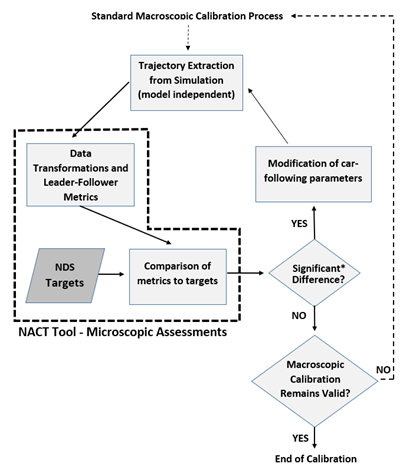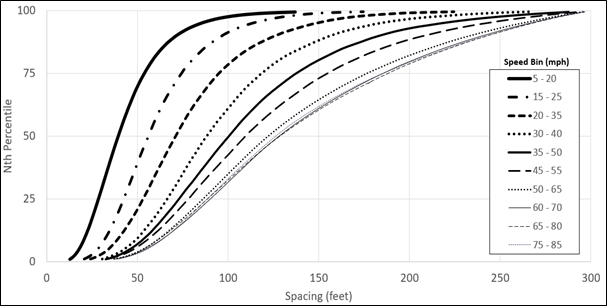Naturalistic Driving Research
Calibration of Microscopic Traffic Simulation Using Driver Behavior and Car-Following Metrics for Freeway Segments
A project Sponsored by FHWA through the SHRP2 Naturalistic Driving Study Pooled Fund - #TPF-5(361)
This research leverages the Strategic Highway Research Program 2 (SHRP2) Naturalistic Driving Study (NDS) datasets to improve understanding of driving behavior, particularly car-following from passenger vehicles on freeway segments under good weather and daytime conditions and proposes a calibration process for microscopic traffic simulation to ensure that simulated vehicle-to-vehicle interactions reflect naturalistic behavior. The proposed calibration is intended to complement typical calibration practices focused on macroscopic metrics such as travel time, delay, and queues. Over 1,600 hours of car-following data from more than 1,700 unique drivers were used as a basis to create driving behavior distribution targets and represent naturalistic driving in terms of vehicle spacing, acceleration, and jerk at different speed levels. A portable open-source tool developed as part of the research, called Naturalistic Assessments of Car-following Trajectories (NACT) (see the link below to download tool), can be used to read generic trajectories from microscopic simulation, extract car-following behavior, and perform statistical comparisons against the NDS targets to guide the calibration process. In addition, the research team explored potential benefits of incorporating macroscopic measures derived from NDS into traditional safety modeling, indicating that increase in the traffic density variance, increase in the speed variance, and decrease in the mean vehicle spacing had significant effects associated with increases in multi-vehicle crash frequencies. Potential improvements to vehicle conflict data analysis using the Surrogate Safety Assessment Model (SSAM) were also evaluated, pointing to conflict frequencies and locations that more closely resemble those from observed crash events when simulated sites were calibrated for vehicle-to-vehicle interactions.

Proposed process to calibrate at the microscopic level
(source: FHWA)

Empirical cumulative distribution plot of spacing all speed groups (source FHWA)

